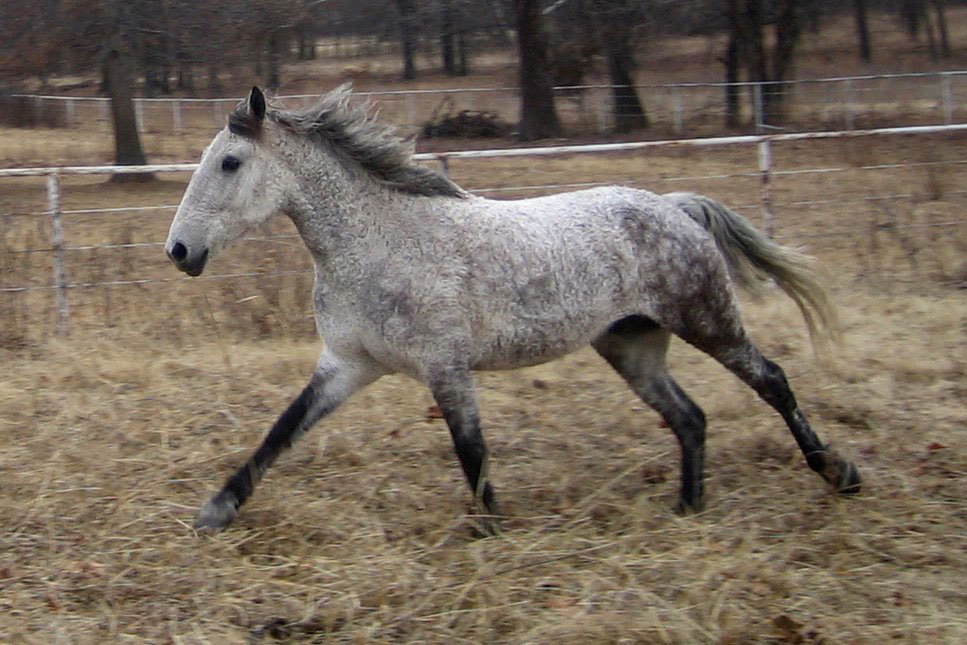Curly Horse
Curly Horse History
The majority of the Curly Horses, also known as the American Bashkir Curly Horse, descend from a herd of three horses found by the Damele family in 1898 roaming the mountain ranges of Nevada. How they came to be on the continent remains a mystery. Theories suggest the horses were brought with early settlers such as Spanish Conquistadors, Russians or Vikings.
Modern blood typing shows that the Curly Horse is not a distinct breed; its genes comprise many breeds, such as the Morgan and the Missouri Foxtrotter. Today, curly coated horses occur in many types: gaited, sport, draft, pony and even a few miniatures. The sure-footed and nimble Curly often participates in gymkhana and western sports.


Curly Horse Characteristics
Born with tight curls everywhere, even in its ears, a curly horse’s coat settles down as the horse matures. Some Curlies have a running walk. Nearly all colors and coat patterns are found and the height varies according to type. The Curly Horse saddle types are the most numerous and range in height from 14.1 to 15.1 hands high. Curly Horses are often hypo-allergenic, and the hair is suitable for spinning.
For more information:
- American Bashkir Curly Horse Registry, www.abcregistry.org;
- International Curly Horse Organization www.curlyhorses.org
Further Reading:
Recent Posts
A Recap of Road to the Horse 2025
Road to the Horse is an exciting, unique colt-starting event, dedicated to changing people’s ideas and creating a better world…
2025 Defender Kentucky Three-Day Event: An Impressive List of Entries
Lexington, Ky. — Six of the world’s top 12 eventing riders, including World #1 Tom McEwen (GBR) and World #2…
2025 Defender Kentucky Three-Day Event
Stay up to date on the action from the 2025 Defender Kentucky Three-Day Event. Find information about the event, including…
Ryan Rose: Creating Strong Partnerships Between Horses and the People Who Love Them
Ryan Rose got bit by the cowboy bug early in life. "My love of horses started when I was a…
Breed Profile: European Brabant
While draft horses come in many shapes and sizes, from the gigantic Shire to the smaller Haflinger, most have something…
The Working Mules of our Public Lands
Flopping ears bounce with every step down the trail as a string of six mules begin the trek from the…